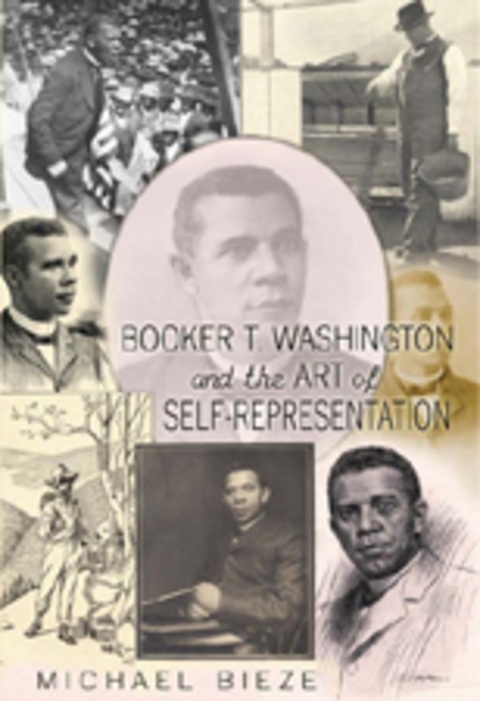
Booker T. Washington and the Art of Self-Representation
Seiten
2008
|
New edition
Peter Lang Publishing Inc (Verlag)
978-1-4331-0010-9 (ISBN)
Peter Lang Publishing Inc (Verlag)
978-1-4331-0010-9 (ISBN)
- Titel z.Zt. nicht lieferbar
- Versandkostenfrei innerhalb Deutschlands
- Auch auf Rechnung
- Verfügbarkeit in der Filiale vor Ort prüfen
- Artikel merken
Booker T. Washington embraced photography as the artistic medium to represent himself and Tuskegee Institute because it was economical, technical, utilitarian, and aesthetic: an apt form for a man who preached a gospel of thrift, industry, self-sufficiency, and beauty. Advancements in photography at the end of the nineteenth century allowed Washington to be simultaneously better known and more elusive – an international celebrity with a multitude of identities.
Washington produced and directed photographic images by considering region, race, and class. Initially, he crafted an image of Victorian grace as a fund-raising strategy which appealed to elite white America’s belief in gradual reform. As Washington entered the last decade of his life, he gradually shifted his efforts toward speaking directly to black audiences with the support of black photographers. He shed the passive role he presented to the white world and challenged racist popular culture by visually demonstrating social and cultural equality.
Washington should be credited with not only launching the careers of several black photographers but also with establishing the early aesthetic of the «New Negro». From 1895-1915, Washington was the central figure in African American culture, supporting black artists telling black stories in the contemporary Victorian aesthetic, and showing how blacks could equal whites artistically and culturally.
Washington produced and directed photographic images by considering region, race, and class. Initially, he crafted an image of Victorian grace as a fund-raising strategy which appealed to elite white America’s belief in gradual reform. As Washington entered the last decade of his life, he gradually shifted his efforts toward speaking directly to black audiences with the support of black photographers. He shed the passive role he presented to the white world and challenged racist popular culture by visually demonstrating social and cultural equality.
Washington should be credited with not only launching the careers of several black photographers but also with establishing the early aesthetic of the «New Negro». From 1895-1915, Washington was the central figure in African American culture, supporting black artists telling black stories in the contemporary Victorian aesthetic, and showing how blacks could equal whites artistically and culturally.
The Author: Michael Bieze has a B.F.A. in studio art, an M.F.A. in art history, and a Ph.D. in educational policy studies. He has been the chair of the Fine Arts Department at the Marist School in Atlanta for over twenty years, teaching art history and studio art. His research on Booker T. Washington and the visual arts has appeared in articles and been presented at several conferences.
| Erscheint lt. Verlag | 13.2.2008 |
|---|---|
| Reihe/Serie | History of Schools and Schooling ; 50 | History of Schools and Schooling ; 50 |
| Mitarbeit |
Herausgeber (Serie): Alan R. Sadovnik, Susan F. Semel |
| Verlagsort | New York |
| Sprache | englisch |
| Maße | 160 x 230 mm |
| Gewicht | 420 g |
| Themenwelt | Literatur ► Biografien / Erfahrungsberichte |
| Kunst / Musik / Theater ► Allgemeines / Lexika | |
| Geisteswissenschaften ► Geschichte ► Allgemeines / Lexika | |
| Geisteswissenschaften ► Geschichte ► Geschichtstheorie / Historik | |
| Sozialwissenschaften ► Pädagogik ► Allgemeines / Lexika | |
| Sozialwissenschaften ► Pädagogik ► Bildungstheorie | |
| ISBN-10 | 1-4331-0010-X / 143310010X |
| ISBN-13 | 978-1-4331-0010-9 / 9781433100109 |
| Zustand | Neuware |
| Haben Sie eine Frage zum Produkt? |
Mehr entdecken
aus dem Bereich
aus dem Bereich
Götter, Helden, Monster und Legenden der Wikinger
Buch | Hardcover (2023)
Librero (Verlag)
19,95 €


